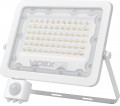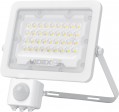The highest power of the light source (lamp) with which the luminaire can operate normally. For models that do not use replaceable lamps (usually LED, see "Light source"), this item indicates the nominal power of the light source; for devices with several lamps or LEDs — the total maximum power (for example, for three 60 W bulbs this figure will be 180 W).
This limitation is due to the fact that more powerful lamps emit more heat (with the exception of LED, where heat generation is minimal) and consume more electricity; this puts forward the corresponding requirements for the heat resistance of the luminaire body and the reliability of the wiring. Therefore, recommendations for power cannot be exceeded — this can lead to failure and even fire of the lamp.
In general, the
higher the maximum power, the brighter the lamp will be and the higher its power consumption. However, only models with the same type, in extreme cases, similar light sources, can be compared according to this indicator (see above). In addition, it is worth considering other design features — in particular, the angle of illumination (narrowly directional models usually use reflectors that increase the apparent brightness of light compared to non-directional ones).
The luminous flux, nominally given out by the lamp (in models with replaceable bulbs — when using lamps of maximum power).
The
higher the value of the light flux, the brighter the glow will be, the farther the lamp will turn out and the easier it will be for it to cover a vast space (at the same lighting angles). However, the number of lumens is a rather specific parameter and is rarely required in fact, mainly for special purposes. It is easier for many to evaluate the capabilities of a lamp using special tables in which the luminous flux is related to the overall brightness of light, lighting range, etc. Here is one of the simplest tables — luminous flux values for the most popular incandescent lamps:
— a 40 W lamp produces approximately 370 lm;
— 60 W — 550 lm;
— 75 W — 800 lm;
— 100 W — 1200 lm;
— 150 W — 1900 lm;
— 200 W — 2700 lm.
That is, for example, if an LED lamp produces 1800 lumens, its capabilities approximately correspond to a 150-watt light bulb. In everyday life, it is often easier to evaluate the brightness of fixtures in this way.
Note that the principle “the more the better” in the case of brightness is not always applicable. And the point here is not only in energy consumption: too bright light can be uncomfortable, and even harmful to the eyes.

